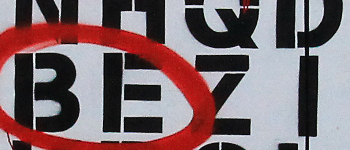When I’m keeping up with roundups, I tend to hoard links, and even jot some notes as I go. Recently things got stupidly busy (moving continents, being temporarily homeless, etc), and the feature is on hiatus for a while.
I found these links in my blog queue the other day, though, and quality is quality. So here they are:
Naomi Klein wrote a piece in The Guardian on the branding of America. She shared some insights into what it was like to be at the heart of the No Logo brand — a scarily contradictory place, and one that has been inevitably co-opted by the corporate world. I was interested to note that she has since developed a version of the brand allergy described by William Gibson in Pattern Recognition. I increasingly find certain brands and modes of communication make me physically queasy. Perhaps this is a condition worth catching. Maybe it is communicable.
Klein primarily discussed the Obama brand, and the disappointment felt by both the left and newly-politicized youth as the rift between his image and the reality of his administration becomes increasingly obvious.
Through late January Darcy Pattison wrote a great series of posts on plot. She tackled outline, plot templates, scenes, and plotting errors. An amazing amount of ground to cover in a series of short articles. Very much worth revisiting.
In the Guardian, Hilary Mantel’s memoir of a past life was an intriguing look at past life regression. She wrote firmly from a non-believer’s perspective, and yet, whatever trickery or psychological magic might have been at work during the experience, the end result was an invented character, her ‘past self’, “the most successful, convincing, rounded character I have ever made”.
Also in the Guardian Rachel Cusk reframed another old question: can writing be taught? Rather than take it at face value, she questioned the thinking that the question itself reveals. She examined the tension between the world of emotional self-expression which is often lost in the transition to adulthood and then decoupled from the world of public communication. The creative writing course often attempts to bridge these worlds:
[T]he creative writing class itself acts as a temporary walkway. By being present there, the student is learning to reunite the private with the public. She is perhaps also returning to the place – the schoolroom – where she believes she first mislaid her primal expressive joy.
To Cusk then, it’s a less a matter of instruction than of rediscovery. I think there’s a lot to be said for this perspective. Though I’ll also take every piece of craft technique (and cheap trick) on offer too when I return to the schoolroom. Perhaps I have the soul of a hack.
A while back Science Fiction writer Charles Stross revealed that he hates Star Trek. I’ve used this link before, but I like it well enough to use it again, partly because it’s funny, and partly because it reveals the crucial importance of an integral premise to good SF.
Laura Cross posted a nice piece on character motivation at AboutAScreenplay. I particularly like the concept of the ‘unconscious dark side’. The force, overt or covert, that compells a character to act against type. Good people doing bad things is what it’s all about.
Speaking of character, Plot to Punctuation more recently featured a useful post on the difference between character arc and epiphany. In short, of course, instances of the latter form points on the graph of the former. It takes more than bunging in a few aha! moments to make your character arc work, though.
Finally, and most recently, a debate that might interest you more than me. Blake Morrison reviewed Reality Hunger in the Guardian. In his recent book David Shields presented a manifesto that championed reality over invention, non-fiction over fiction. I’m sure the book is much less fatuous than the premise makes it sound, but I’m not sure if I have time to stop inventing things to find out.
The regular round up will return…





